How Casters Reduce Downtime and Costs in Construction

Picture a bustling construction site: prefab modules lifted into place, massive stone slabs moving across staging areas, towering scaffolding rolling into position, and delicate glass panels gliding carefully across uneven surfaces. Every piece of this enormous puzzle must move quickly, safely, and precisely to keep projects on schedule and budgets intact.
But what makes all this motion possible?
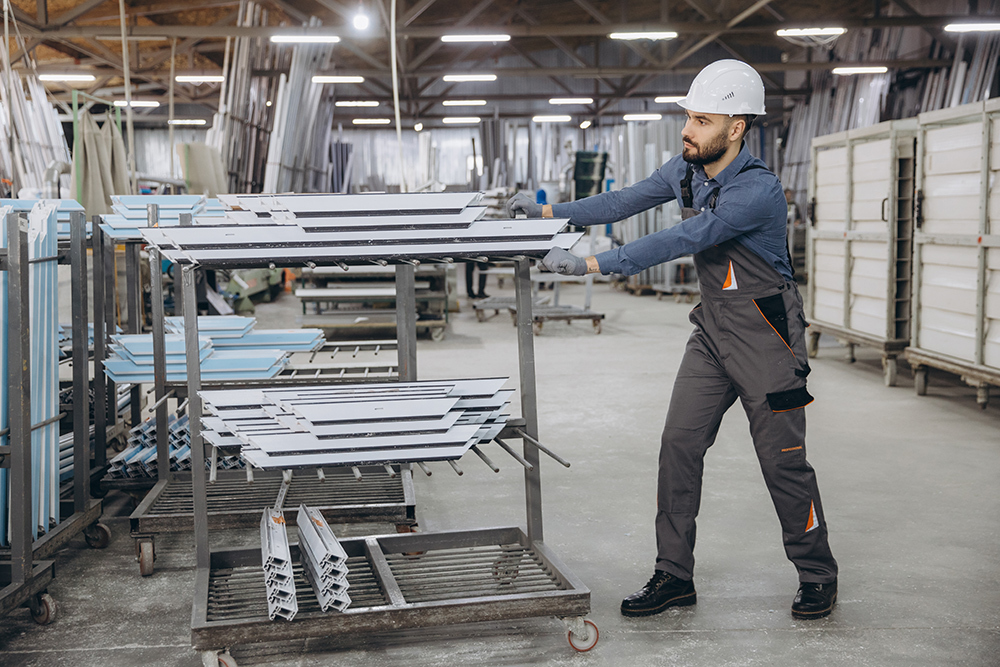
Behind the scenes, often unnoticed, casters are the hidden heroes enabling construction teams to move, adjust, and fine-tune materials with ease. Far from being an afterthought, casters are vital components that drive efficiency, enhance safety, protect valuable materials, and ultimately impact the bottom line.
In this blog, we’ll explore why mobility matters in construction, the daily role casters play, the major ways they boost efficiency, what happens when they are overlooked, and how to choose the right caster solutions for your projects.
Why Mobility Matters in Construction

Modern construction is a symphony of moving parts—literally. Prefabricated housing components, heavy stone panels, concrete forms, scaffolding structures, and fragile glass all need to move efficiently across worksites, manufacturing floors, and final assembly areas. Timing, flow, and precision aren’t just nice-to-haves—they are critical to staying on schedule and within budget.
When materials don’t move easily or safely, projects stall. Missed deadlines cascade into higher costs, overtime labor, and penalties that can hurt a company’s reputation and bottom line.
The Cost of Poor Mobility on Construction Sites
Without the right mobility solutions in place, construction teams encounter a range of serious and costly risks:

Project Delays
When materials cannot be staged or moved efficiently, critical tasks are held up, causing schedule disruptions and pushing back key milestones.

Increased Risk of Injury
Workers are more likely to suffer strains, sprains, or other injuries when manually handling heavy or awkward loads without proper equipment.

Material and Equipment Damage
Improper or inadequate mobility tools often lead to cracked panels, broken glass, or damaged machinery, all of which require expensive repairs or replacements.
Ultimately, poor mobility drains productivity, increases liability, and compromises job site safety. These are challenges no construction project can afford to ignore.
The Role of Casters in Daily Operations
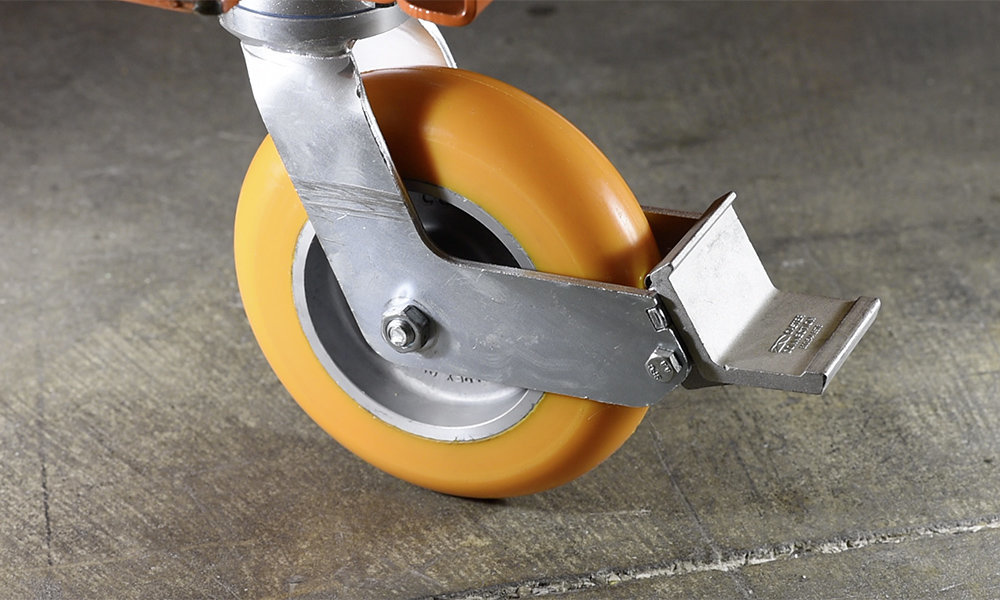
While often overlooked, casters play a vital role in the day-to-day flow of construction projects. From the controlled environment of the factory floor to the unpredictable terrain of active job sites, casters provide the mobility needed to keep materials and equipment moving. Whether transporting massive structural elements or maneuvering fragile finishes, the right caster solutions make it possible to work faster, safer, and with greater precision. This section explores how casters enable critical movement across each phase of construction and why they are essential to both productivity and protection on the job.
From Factory Floor to Construction Site
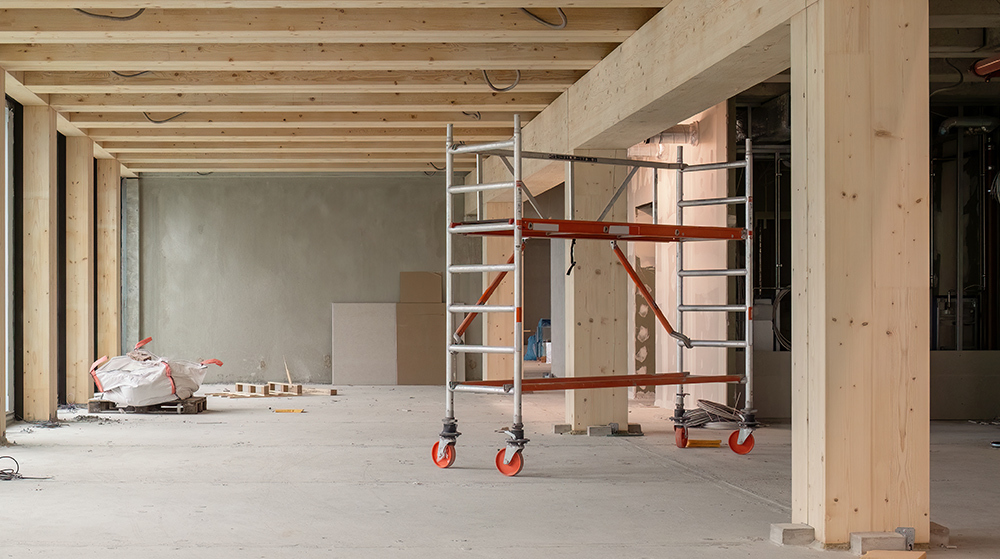
Casters may not grab headlines, but they’re working hard behind the scenes every step of the way. From the moment materials leave the factory to the final installation on-site, casters quietly keep construction projects moving.
Think about the big stuff: prefab house sections rolling out of manufacturing plants, massive stone panels getting staged for cranes, scaffolding shifting into place across uneven ground, or delicate glass panels gliding into position without a scratch. All of it happens smoothly thanks to the right caster solutions.
Whether you're handling raw building materials or finished components, casters help ensure that everything arrives exactly where it’s needed—safely, efficiently, and intact.
Equipment That Moves Better with Casters
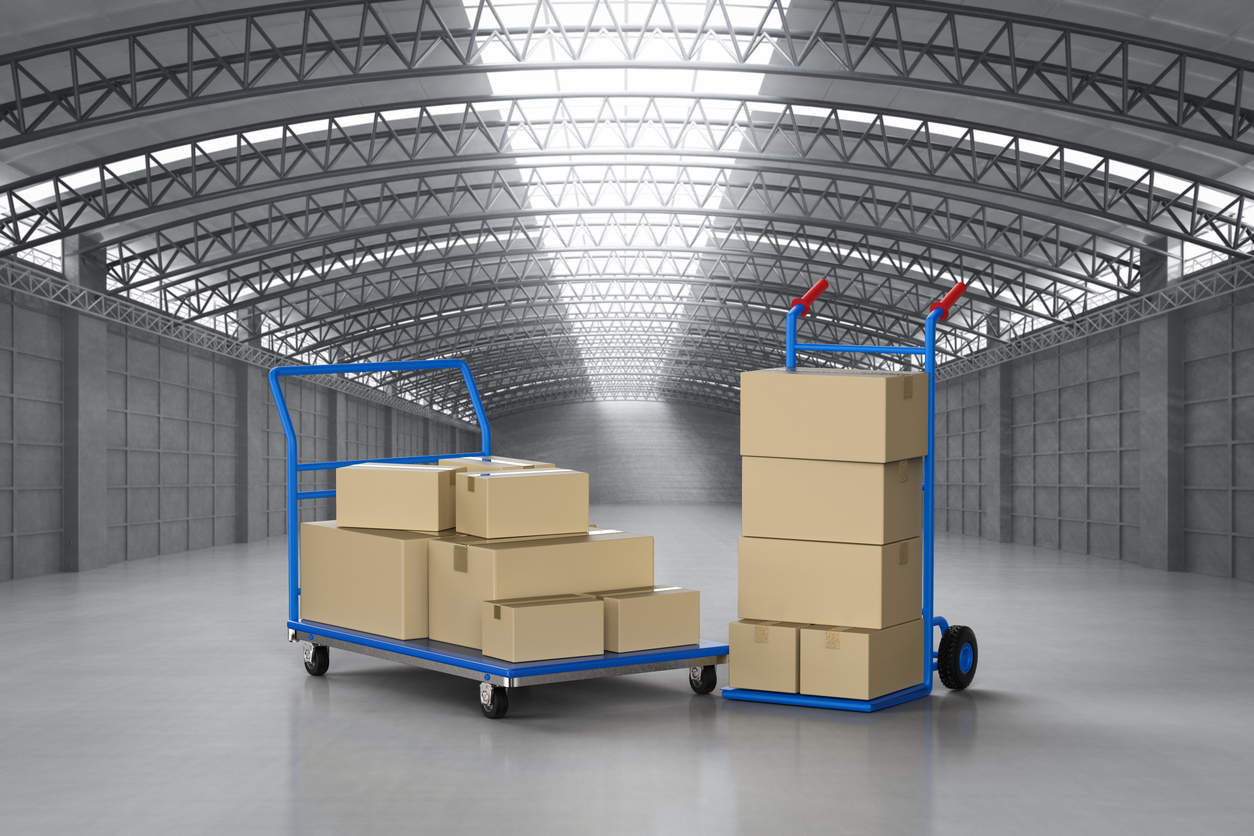
Casters aren’t limited to just one type of gear. They enhance the mobility and function of a wide range of job site essentials, including:
- Racks and shelving units that organize and transport parts
- Dollies and carts used for everything from tools to materials
- Mobile work platforms that move workers and gear to hard-to-reach spots
- Modular scaffolding systems that roll and lock into position
- Storage systems that keep delicate or heavy components secure and accessible
Small Movements, Major Impact
It’s not just about the big moves. Casters also give crews the ability to make those fine-tuned micro-adjustments—sliding a panel just an inch into place, aligning scaffolding for a perfect fit, or repositioning work surfaces on the fly. Instead of relying solely on forklifts or cranes, teams can handle small changes quickly and safely, saving time, reducing strain, and keeping workflows moving without interruption.
Key Ways Casters Drive Efficiency
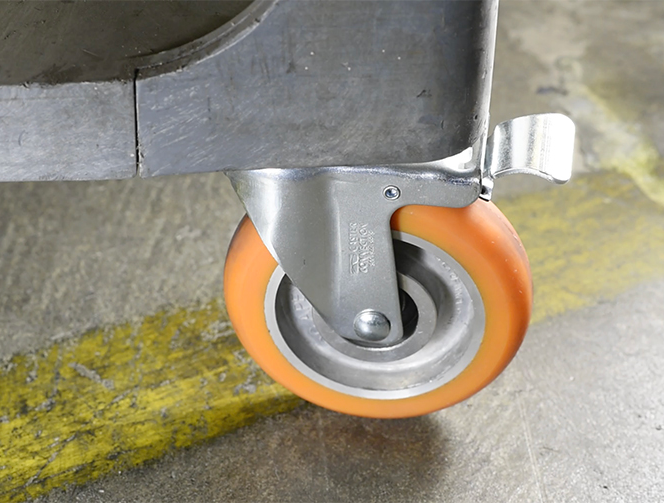
In construction, every minute matters, and so does every movement. The right caster solutions do more than make materials mobile. They create measurable efficiencies across the entire job site. From reducing physical strain on workers to preventing damage to valuable materials, quality casters support a safer, smoother, and more productive work environment. Here are some ways high-performance casters help construction teams work smarter, move faster, and stay on schedule.
1. Reducing Manual Labor and Worker Fatigue

High-quality, ergonomic casters make it easier to move heavy materials, which reduces physical strain on workers. With less effort required, teams can handle loads more efficiently, lowering the risk of injuries from overexertion or improper lifting techniques.
2. Accelerating Workflows
Reliable casters allow materials and equipment to roll into place quickly and safely, helping maintain momentum on the job site. With smoother movement and fewer delays, deadlines become easier to meet, and labor can be redirected to higher-value tasks instead of time-consuming material handling.
3. Protecting High-Value Materials

Shock-absorbing and specialty casters help safeguard fragile materials such as glass and high-cost prefab units. By preventing cracks, chips, and shifting during transport, these casters can save thousands of dollars in replacement costs.
4. Enhancing Safety and Reducing Downtime
Casters with integrated braking systems, locking mechanisms, and stable designs help keep materials and equipment secure when not in motion, which reduces the risk of accidents and helps minimize unexpected downtime.
5. Surviving Harsh Environments

Casters that are specifically built for the demands of construction are designed to withstand dust, debris, moisture, and rough terrain. This durability leads to a longer service life and reduces the need for frequent maintenance.
What Happens When Casters Are Overlooked?
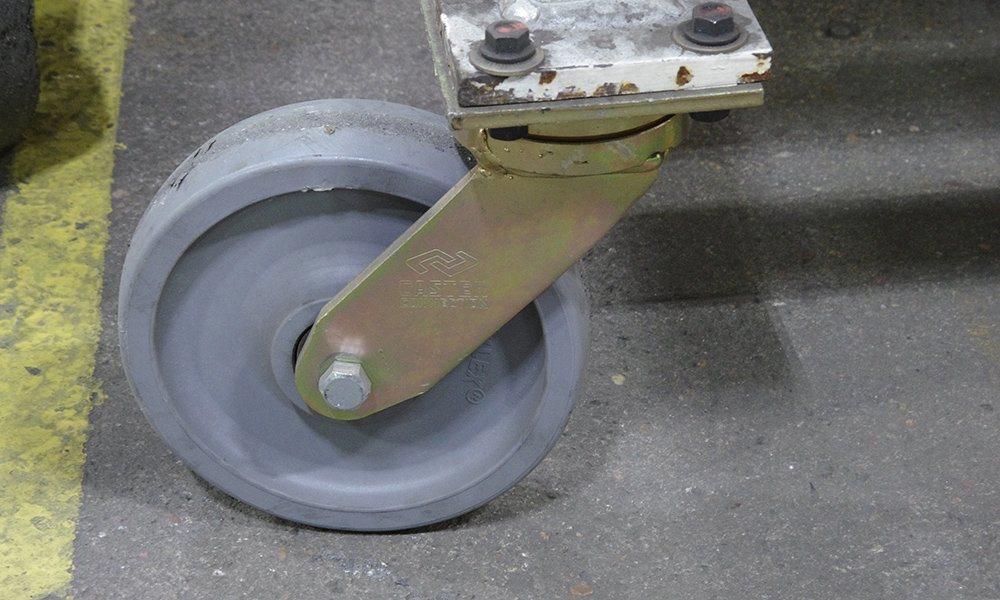
In construction, small details can have a big impact. Casters are often seen as minor components, but when they are overlooked or poorly chosen, the results can be costly. The wrong caster choice affects everything from worker safety to project timelines and material protection. Ignoring mobility needs can lead to a chain reaction of avoidable problems on the job site.
Real-World Problems

When casters are overlooked or poorly chosen, a variety of issues can disrupt the job site:
-
Material damage is more likely. Glass panels may crack, stone slabs can chip, and prefabricated components may suffer from rough handling due to inadequate mobility.
-
Equipment rentals may become necessary. When materials cannot be moved efficiently, crews often need to rent additional machinery, which adds unexpected costs.
-
Worker injuries become a greater risk. Without proper caster support, employees may be forced to lift or shift heavy loads manually, increasing the chance of strains, sprains, or more serious incidents.
-
Project delays are harder to avoid. Mobility issues slow down staging and installation, leading to missed deadlines and increased labor expenses.
These problems can cascade quickly, turning a small oversight into a major disruption across the entire project.
False Economy
Choosing the cheapest caster option may seem like a good way to save money, but this approach often leads to larger, unexpected expenses. A small upfront savings can turn into thousands of dollars lost due to damaged materials, equipment rentals, or workplace injuries.
Investing in the right caster solutions at the beginning of a project helps prevent these issues. It is a practical, cost-effective choice that supports safety, efficiency, and overall project success.
What to Look for When Choosing Casters for Construction
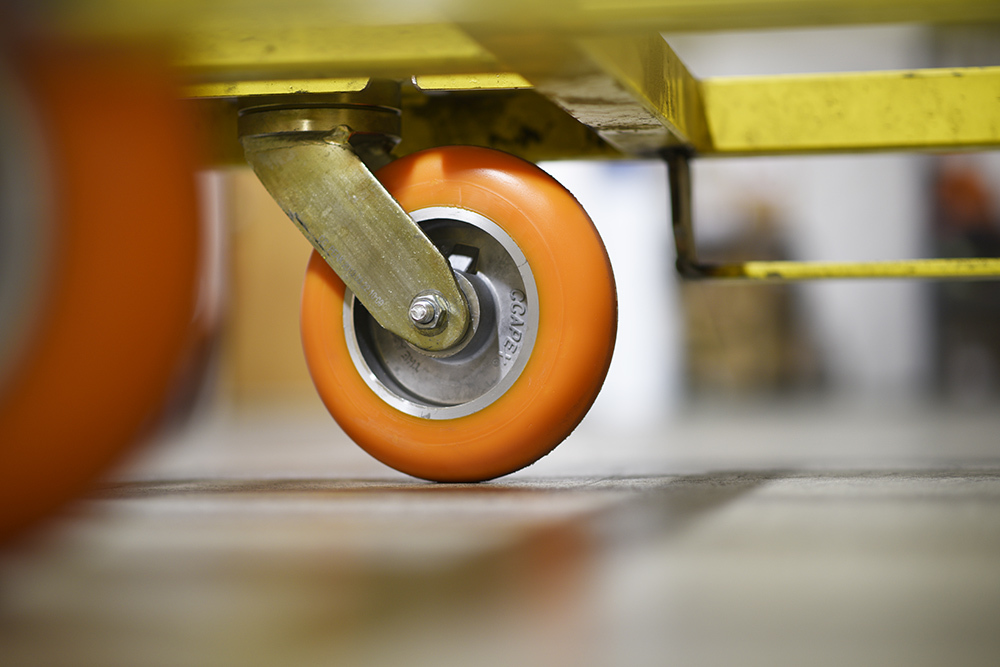
Not all casters are created equal, especially when it comes to the demands of a construction site. Harsh conditions, heavy loads, and frequent movement all place unique stress on mobility equipment. Choosing the right caster from the start helps ensure smooth operations, protects your materials, and keeps your team safe. Here are the key factors to consider when selecting casters for construction environments:
-
Load Capacity: Make sure each caster is rated to safely support the maximum weight it will carry, including the weight of the equipment or platform it is attached to.
-
Floor Conditions: Select wheels that can handle the specific surface conditions of your site, including dust, moisture, uneven terrain, and debris.
-
Material Compatibility: Use steel casters for strength and durability, polyurethane for added shock absorption, and rubber for quieter, smoother rolling. Match the wheel material to your environment and use case.
-
Shock Absorption: Protect fragile or high-value materials by choosing casters that minimize vibration and absorb impact during transport.
-
Braking and Stability Features: Look for casters with reliable, easy-to-use brakes and locking mechanisms to keep loads stable and secure when stationary.
-
Corrosion Resistance: If your project involves outdoor work or exposure to moisture, corrosion-resistant materials are essential for long-term performance.
-
Ease of Maintenance and Replacement: Choose caster designs that are easy to service, inspect, and replace to help reduce downtime and keep your equipment in top shape.
Making the right selection up front can save time, reduce risk, and improve overall efficiency on your job site.
Rethink the Role of Casters in Construction
Casters may seem like a minor detail, but their role in construction is anything but small. The right caster solutions can significantly improve site efficiency, enhance worker safety, and help ensure the overall success of a project. They are not just accessories; they are essential tools that keep operations moving smoothly and safely.
If your current mobility setup is falling short, now is the time to evaluate your caster strategy. Are your materials being moved efficiently and without damage? Are your workers protected from unnecessary strain? And most importantly, are you safeguarding your margins by preventing costly delays and repairs?
The right casters can make all the difference.
Ready to see how upgrading your casters can move your project forward?
Start a free Caster Needs Eval with one of our Caster Nerds today.
